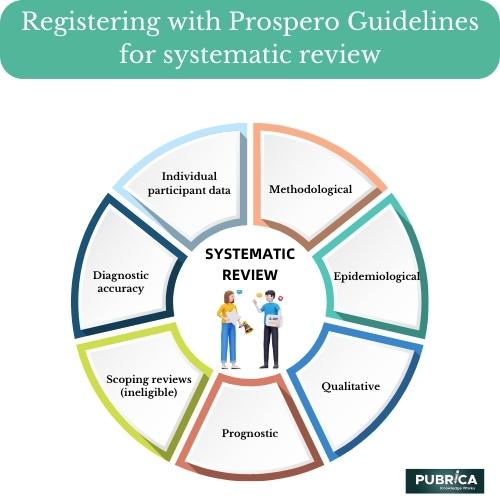Registering with Prospero Guidelines for systematic review
Registering with Prospero Guidelines for a systematic review is crucial in ensuring transparency, rigour, and credibility in the research process. Prospero, the International Prospective Register of Systematic Reviews, provides a platform for researchers to publicly declare their intent to conduct a systematic literature review, outlining their research protocol and methodology before commencing the review.

- By registering with Prospero systematic review, researchers commit to following standardized guidelines, which helps to reduce the risk of bias and enhances the overall quality of the systematic review. This process also discourages duplication of efforts, as registered reviews are publicly accessible, preventing others from conducting the same review without collaboration or coordination.
- Additionally, registering with Prospero protocol encourages researchers to carefully plan their review process, including formulating research questions, search strategies, inclusion/exclusion criteria, and data analysis methods. This level of planning and documentation ensures that the review process is well-thought-out and objective, promoting transparency and reproducibility.
- Prospero registration provides valuable insights into ongoing systematic reviews for the broader research community and stakeholders, allowing them to monitor progress, identify potential research gaps, and collaborate with narrative review authors if necessary. This fosters cooperation and prevents redundant research efforts.
In summary, registering with Prospero Guidelines for a systematic review is a fundamental practice that upholds research integrity and facilitates evidence-based decision-making. It exemplifies a commitment to following established best practices, enhancing the trustworthiness and utility of systematic reviews in advancing knowledge and informing policy and practice.
References
Booth, Alison, et al. “The nuts and bolts of PROSPERO: an international prospective register of systematic reviews.” Systematic reviews 1.1 (2012): 1-9.
